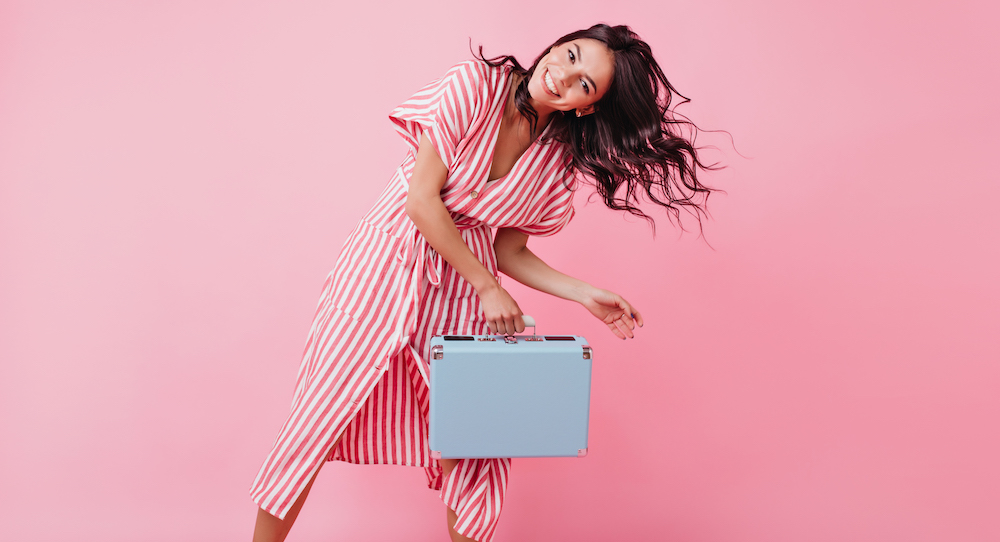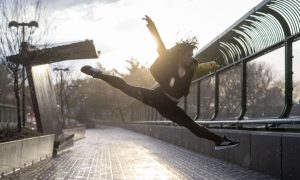Have you ever packed for a trip, thought you were all set, and then remembered a few less obvious items to add? I know that I have. Many dancers are now getting ready in a similar way. Yes, it’s that time of year again: we’re preparing to head back to the studio for full fall schedules.
Certain things may come to you without much thought: tights, leotards, warm-ups, shoes for your various styles, proper padding and tools for pointework. Yet, others may be less intuitive – but make a world of difference for your technique, your artistry and your holistic health. Let’s take a look there – from that holistic lens, what you might need for your body, mind and spirit as you head back to dance this fall.
Body
#1. Compression socks
These handy items are getting more and more dance world traction these days. They can be life-savers for muscle recovery and in the injury recovery process. They can reduce inflammation and discourage foot/ankle misalignments (which are all too common, and often problematic, in dancers). Having these socks on hand can be quite helpful for those days when your calves are sore and your ankles are feeling a little wonky (and you have a solo en pointe on deck in rehearsal…eek!).
#2. Kneepads
Point of view: you’re in contemporary class and loving the combination of the day…but there’s floorwork on the knees, and yours are getting sore. Which drawer did you leave your knee pads in at home? Been there, done that. You can prevent such a situation through making sure that you have a good pair in your bag, with secure and sufficient padding.
#3. Snacks (that work for you!)
It may seem like a given to have snacks for the studio. But – whether because of time, money or weight-based concerns (thankfully the dance field is moving forward there, right?) – too many dancers end up at the studio feeling hungry and low on energy…without anything to eat with them. Don’t get stuck there!
Our body and its needs also change over time, so it never hurts to reassess what works for your body, now (not to mention with dietary restrictions/preferences and budgets). So, if possible, take some time to do thoughtful research, reflection and grocery shopping – so that you have the fuel you need!
Mind
#1. Choreography brain
Another point of view – you’re back in class after time away, and your brain for choreography retention is…not in the building. Learning and executing choreography takes a certain kind of mental acuity – one that dancers develop over time, but which also needs to be regularly exercised in order to not atrophy (just like a muscle!).
The way to get that back is…you guessed it, practice learning choreography. YouTube has great free tutorials, many of which aren’t too long. If you have a private space to dance, then you can at least fumble through that choreography mental fogginess in private. Or you can get together with friends and teach one another!
#2. Dance journal
I personally love taking post-class notes (this last year, I made it a ritual). You can reflect on successes, acknowledge things to work on going forward and take note of corrections that resonate with you. It can also help to write down choreography that you’re learning, so that it’s not gone by your next rehearsal. (Yes, many artists take video these days…but, especially for kinesthetic learners, the act of writing itself can aid memory.)
Make your journal something that you’ll want to return to — maybe in a favorite color/design, maybe with stickers you love, maybe purchased from a favorite place or from a favorite person. Whatever will help keep you coming back!
#3. Technique books
Was that a brisé battu? I think I’m missing one of the steps in pas de basque. Oh no, I can’t think of two of the eight body positions…we’ve all been there. Never fear, there are books – some of them in very portable sizes – that can answer these questions for you.
If ballet isn’t your typical style, there are similar books in the style(s) that you do dance. Pack these in your dance bag, and you know that you have resources with you for your technique questions. Just don’t forget to add your name and a way to contact you; we dancers get busy, and it can be all-too-easy to misplace things!
Spirit
#1. Books that inspire
Speaking of books…there are more dance books in circulation than we often realize! Biography, history, process/instructional…you name it, it’s out there. These resources can intrigue and inspire you during the rocky, uncertain times. It can remind you of why you dance, and learn about how other artists have handled similarly rough times. Or perhaps these books can help get your creative juices flowing when they’re feeling stagnant.
We’re all unique, with different things calling to us…so find what calls to you! Perhaps you browse what your local library has on the shelves, and/or ask dance friends what their favorites are. If you like to own your own copies, thriftbooks.com and bookshop.org are great options.
#2. A growth mindset
This is a little mind, a little spirit…but I’d argue a bit more spirit. In short, a growth mindset argues that improvement is possible through dedication and consistency…in other words, getting to class and giving your all when you’re there (for example). This outlook reminds you to stay open to possibility.
It steers you away from self-criticism and toward concrete steps that can help you improve, away from rumination and toward the belief that you can grow as an artist (and beyond). Bring it into the studio with you, and watch growth happen…not because it’s magic, but because it will guide you to do what catalyzes growth.
#3. Affirmations
If this one is a bit “out there” for you, no problem, you do you. But I’ll offer it anyway. Affirmations are simple, short statements, often repeated. They’re positive and self-affirming – and also in the present tense, in order to reinforce what is. It’s the “believe it, be it”, “fake it ‘til you make it” approach; remind yourself of something enough times, and you just may believe it.
Just like with a growth mindset, it’s less magic and more impactful because of what it can guide you to do. And like all else discussed here, it’s going to be a bit individual to each of us. So before heading back into the studio, try on a few different ones for size and see how they feel. A few examples to get you started: “I am strong and capable,” “I can succeed,” “I can reach my goals,” “I am enough,” “I belong.”
Funny enough, with all that we’ve discussed here about bringing back to your full studio schedule, that’s the thing: the most important thing to bring is you. Everything that you really need is already right there. So get in there and get it! Good luck, we’re rooting for you!
By Kathryn Boland of Dance Informa.















